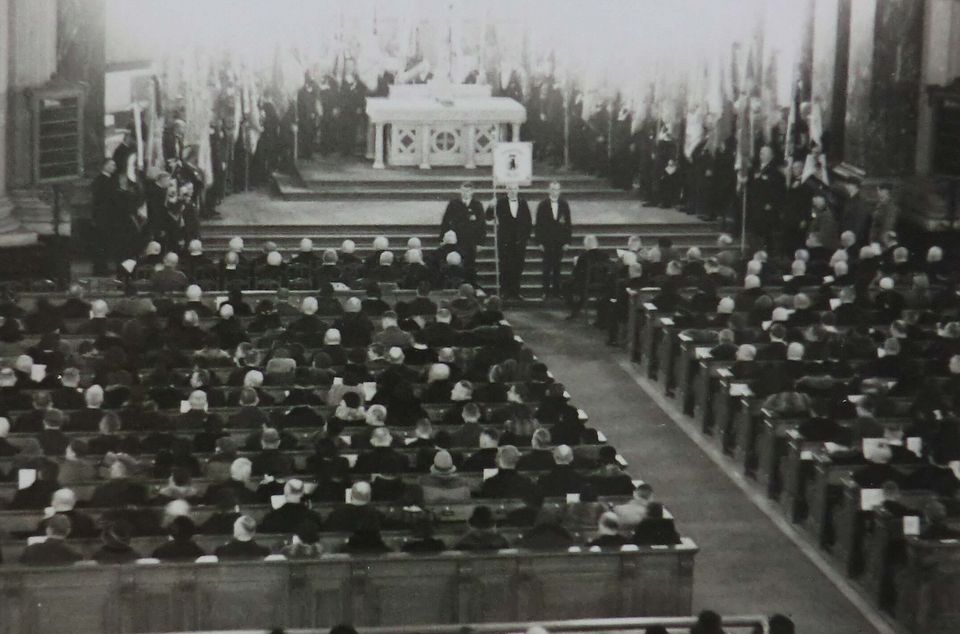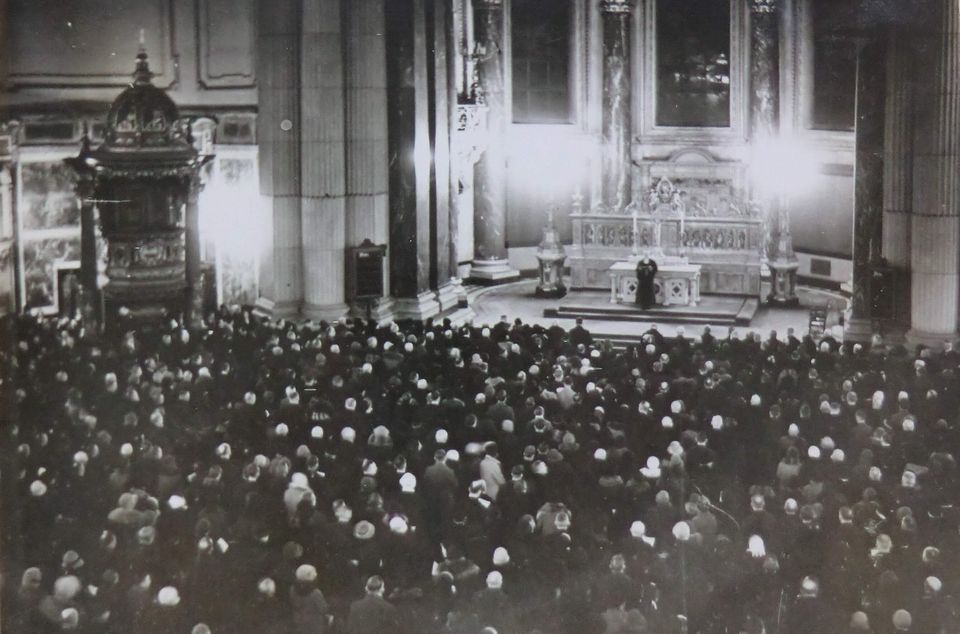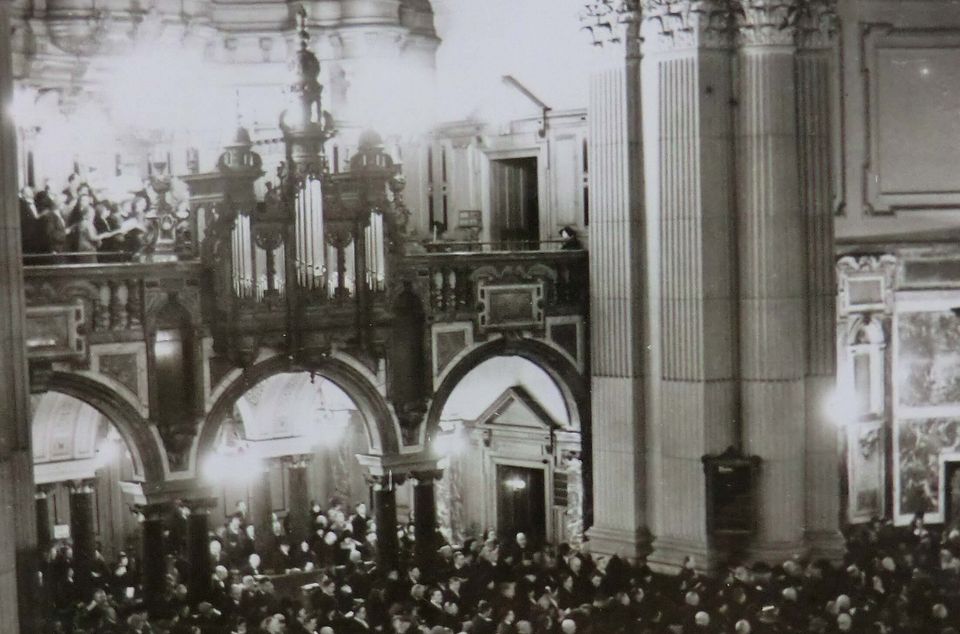Parish history
The history of Berlin Cathedral’s parish is as varied as that of the building itself. Elector Joachim Friedrich transformed the spiritual foundation that had existed since 1465 into a parish church, the ‘Evangelical Supreme Parish and Collegiate Church in Berlin’ in the year 1608. But it was not until the conversion of Elector Johann Sigismund from Lutheranism to Calvinism that a Reformist parish in Berlin-Cölln started to developed, which was granted the Cathedral as a place of worship in an official charter dated 1632.
In the course of Prussian state reforms, the statute of 16 May 1812 established the Cathedral Council, which bore responsibility for both secular and spiritual work. This parish committee (that still exists today) now had two members elected by the Cathedral parish for the first time.
With the creation of the Prussian Union in 1817, the Cathedral had become firmly associated with the Lutheran and Reformist parish community. The Cathedral Parish was classified as the ‘first union parish’. From 1817 onwards, any such accession to the parish – which as a so-called ‘personal parish’ had no fixed diocese – had to be expressly declared as it still does today. The castle rectorate was a particular highlight. Between 1858 and 1919, this parish community consisted of castle inhabitants with the exception of the Royal family itself, and was cared for by a chaplain who was both Court and Cathedral Dean at the same time.
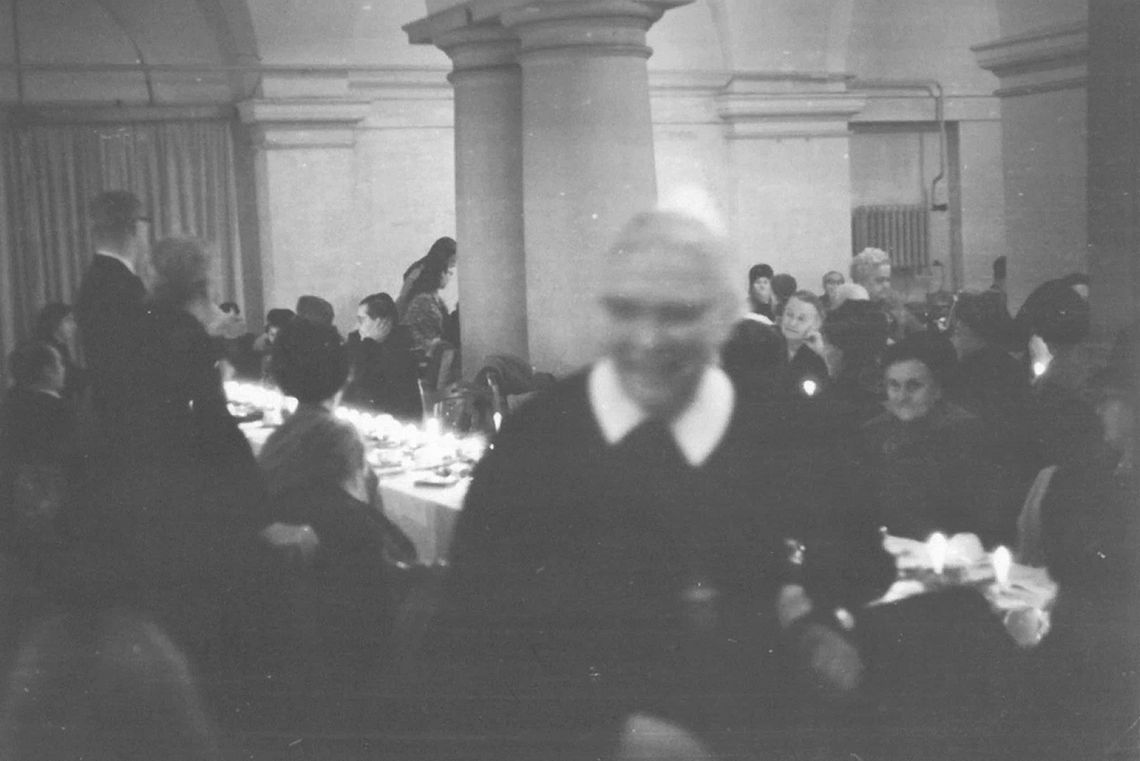
The parish, which saw significant growth as a result of the Industrial Revolution and the creation of the German Empire in the course of the 19th century, comprised individuals of all social classes: in addition to members of the nobility and bourgeoisie, members also included so-called manual workers and day labourers. The revolution of 1918 and the subsequent end of the monarchy represented a significant turning point for the Cathedral parish, which was very closely linked with the Imperial Court. Even during the time of the Weimar Republic, which was met with great scepticism, the link to the Hohenzollern family remained strong. When former Empress Auguste Viktoria died in 1921, Wilhelm II. was given photos of the Cathedral that had been decorated for the memorial service ‘as a sign of our unwavering devotion’ (Cathedral Archive, Vol. 1, No. 3106). The Hohenzollern family crypt remained the private property of the former ruling house, and was not accessible to the public.
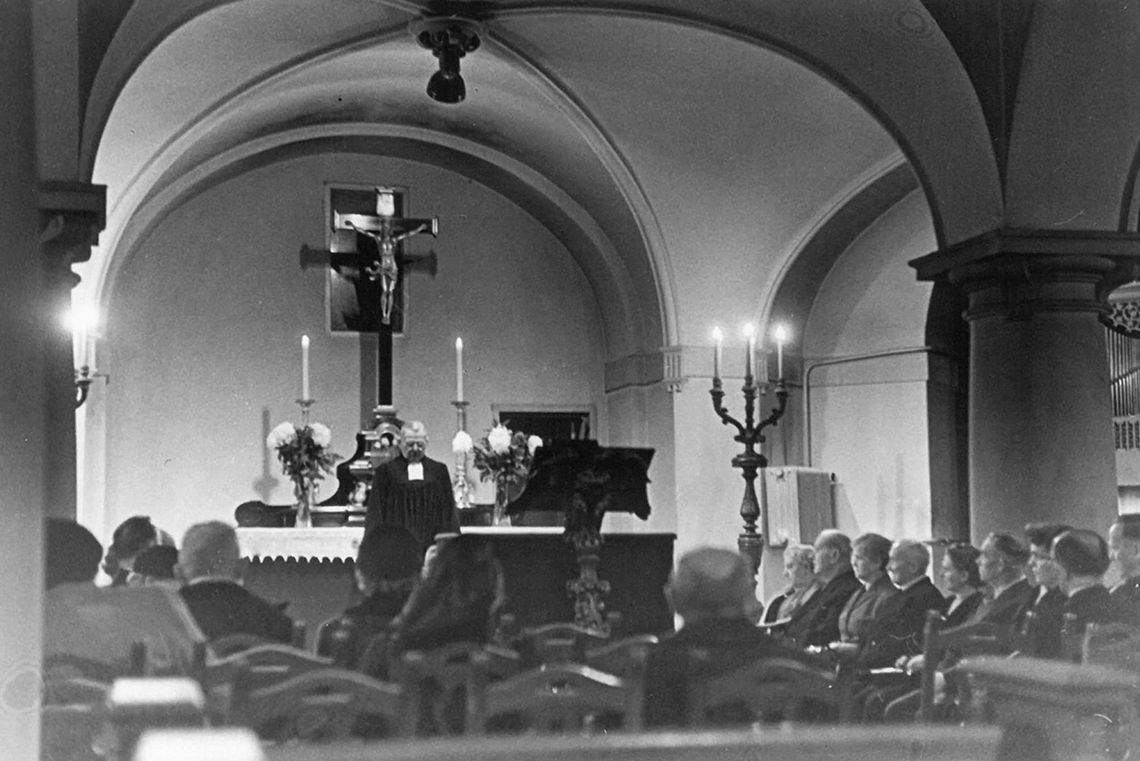
During the time of the National Socialist dictatorship, Berlin Cathedral – as the country's key Protestant church – found itself torn between successful, state-run interference and resistance by the Cathedral parish. The parish resisted, for example, the appointment of Friedrich Peter, an exponent of the ‘German Christians’, to the position of Cathedral Dean. On the other hand, the Cathedral was misused as a platform for symbolic celebrations, which were intended to show the Protestant church and the National Socialist state standing shoulder to shoulder. Events such as the inauguration of the ‘Imperial Bishop’ in the year 1934 and the church marriages of key National Socialist figures such as Hermann Goering in the year 1935 fall within this period. A conclusive assessment of the Cathedral's role in the Third Reich has yet to be made. The entire topic is currently the subject of a more detailed investigation as part of a research project by the Humboldt University in Berlin.
Following the Cathedral's destruction in 1944 and in the aftermath of the Second World War, up to 1,000 faithful members of the congregation met in the Tomb Church for Sunday services. The city’s division as a result of the Berlin Wall weighed heavily on the community. Residents in West Berlin built a community centre situated on Müllerstrasse, near to the Cathedral cemetery. The parish continued its work in the eastern section of the destroyed Cathedral; however, the Tomb Church had now also become in need of repair.
The congregation was granted a new place of worship after the Baptismal and Matrimonial Church was first restored after 1980. The process of two communities re-merging after 1989 took some time. A significant amount of understanding was required from both sides, in order to tread what is essentially a challenging shared path.
The Cathedral parish has been celebrating its services of worship in the restored Sermon Church (Predigtkirche) since 1993. The Cathedral parish has seen steady growth, and now has roughly 1,700 members.
